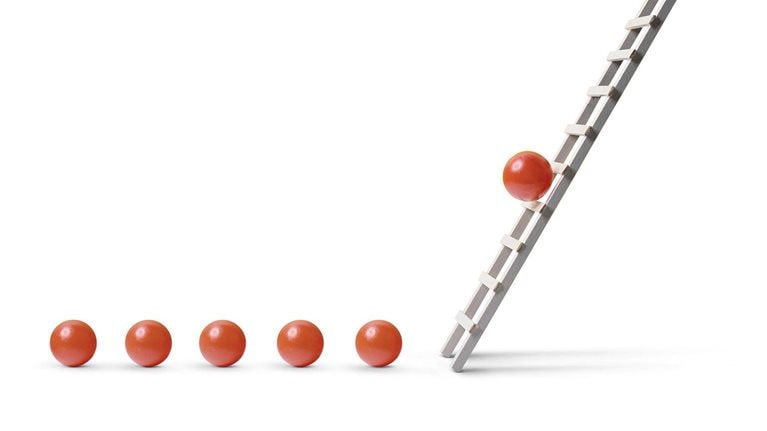For many industrial companies, product complexity is a way of life. In the context of global markets, customers’ need for tailored products—whether to comply with variations in environmental, safety, and health regulations or simply to meet different market preferences—makes a diverse product portfolio a strategic necessity.
But the proliferation of niche products, with an endless creation of new variants, often results in lower-than-expected profitability. In response, many companies embark on extensive cost-reduction programs, often centering on design-to-cost (DTC) or design-to-value (DTV) principles. Yet these methodologies, as valuable as they may be in reducing the cost of materials and components, cannot reveal the entire cost of increased complexity across a full product range.
This limitation means few companies know what complexity is truly costing them. That has two effects. First, it can lead executives to believe that the net benefit of their DTC and DTV initiatives is so small that they are not worth the effort. And second, it can lead them to misdiagnose the true source of the cost pressures they seek to relieve.
But a new approach to understanding cost complexity allows industrial manufacturers to understand what complexity is costing them, and where it comes from. A white-goods manufacturer, for example, developed a detailed model that allows it to size complexity along the entire value chain as part of ongoing project reviews. At a machinery company, all new-product and product-improvement initiatives now include an explicit “cost of complexity penalty.” And an automotive player has used this technique to reduce costs by three percent for one of its components—a significant reduction in a mature sector.
Make better product-related decisions
From committing to new offerings to dropping or adding variants to existing ones, industrial companies are always making decisions about their products, individually and as a portfolio. The problem companies face is that over time, these decisions tend to increase operational complexity and its attendant costs—which collectively can span the entire value chain and often grow exponentially with the addition of each new variant. Adding a new component, such as a new gearbox variant for commercial vehicles, can have significant cost effects not only in the short term, but also for the long term, given the importance of aftersales and service for industrial companies.
While ultimately these costs are accounted for in a company’s overall P&L, they tend to be masked within the aggregate and can include:
- Additional development hours and supplier searches
- Lower order quantities and larger inventories
- More complex production control
- Additional losses for work scheduling, production startup, tooling, and retooling
- Higher return rates, quality issues, and warranty claims
- Additional training and service material
Finding the root sources of these costs is difficult, as they tend not to be directly or exclusively linked to an individual product or even to a particular product family. With the right approach, however, it’s possible to get a solid grip on the true cost of complexity as part of any product-development effort.
Would you like to learn more about our Operations Practice?
Complexity is both external and internal
The method employed to quantify the cost of complexity depends largely on the question to be answered. Two perspectives on complexity help us pinpoint these costs and answer the wide range of questions related to cost complexity: outward-facing (related to the product portfolio) and inward-facing (related to product components and materials).
External complexity is portfolio-driven
There are two main goals when looking at complexity from the outside, each considering a different time horizon. The first looks at today’s performance, repricing or eliminating underperforming product families and SKU-level variants through a close examination of factors driving indirect costs—such as sales volumes, the sheer number of variants on offer, and the number and scale of supplier relationships (Exhibit 1). The core objective is to provide direct P&L relief, unlocking resources for reallocation to more-profitable, or more-promising, product lines.

The second task in understanding external complexity seeks to contain future SKU proliferation. In this case, the calculation is made continuously to help with decisions about potential future SKUs while allocating their various operating costs. The calculation can inform the decision whether to proceed with the new SKU based on its projected return on investment. If the SKU gets the green light, the external calculator can recommend a price that helps ensure positive operating profit.
Internal complexity is component-driven
Understanding inward-facing complexity includes an assessment of the impact of modularity and DTV efforts, supporting decisions on the introduction of new variants and the launch of new products and platforms. It also informs the optimal number of variants for the product’s different submodules. Internal complexity can be assessed using two different archetypes: top-down and bottom-up.
The top-down archetype applies either a fixed or variable cost to each new variant or part number created. This model is pragmatic and fast to implement, allowing for quick mobilization of the organization and fostering a broader awareness. The bottom-up archetype is more sophisticated and includes both hard costs (for materials, inventory, and the like) and soft costs (including for labor and resourcing) (Exhibit 2). Instead of using an average-cost allocation, this archetype considers business case–specific activities: for example, estimates of manufacturing costs incorporate factors such as variations in change-over requirements or batch sizes; estimates for indirect functions focus on the specific activities involved, rather than applying a single average labor rate. It can be deployed using either a moderate amount of specificity—combining elements from the detailed business case with top-down estimates—or with a high level of detail that breaks down the costs for each component across the value chain.

The central issue in moving from the simpler top-down to the more-sophisticated bottom-up approach is the availability of data, which can be addressed through digital and analytics (see sidebar, “Deep dive: Building an analytics-based cost-of-complexity model”). The most sophisticated scenarios aim at combining the external and internal perspective, with the objective to link portfolio decisions to detailed estimates of the implications for the internal value chain.
Today’s analytics are powerful enough that in analyzing external complexity, they can achieve levels of detail that once were possible only for internal complexity. Specifically, the ability to consolidate cost, inventory, and other data across an entire product portfolio gives industrial companies an easier, more accurate way to calculate the end-to-end impact of decisions related to the portfolio.
Companies will naturally choose an archetype based on the maturity of their organization, often starting with the simpler approach and moving toward the more sophisticated one over time.

Your first 100 days as CPO
A multifunction cost calculator
Among the most advanced industrial players, cost of complexity is becoming a crucial performance indicator for top management in tracking the profitability of serving new customer needs. A calculation approach that innovates on traditional methods can increase transparency in decisions related both to product introduction and phase-out. With additional features and functionalities, a more granular calculation can run more than 25 separate analyses to determine the cost of complexity across the entire value chain.
End-to-end perspective. The new approach supports a comprehensive business case, with a wide range of cost-input options (both hard and soft) from material, rework, and tooling costs to annual volume and spare inventory.
Multiple operating modes. A quick-analysis mode combines only the highest-priority cost dimensions with industry benchmarks to derive high-level cost implications; in top-down mode, users drill down to the part-number level to answer deeper questions; finally, an advanced mode covers dozens of parameters if data are available.
Design optimizer. An analytics engine lets users input different scenarios, then uses sensitivity analysis to automatically suggest the optimal number of variants to allow.
Portfolio magnifier. The calculator gives the option to aggregate analyses and insights at both the functional and product levels. This way, a company undertaking both DTV and modularization projects can integrate their results for product modules, such as electrical or lighting systems, or for entire products and platforms.
Customization module. The new way of calculating complexity also has the ability to customize user hierarchies, portfolios, and product structures, and define different roles to align to different client contexts.
That transparency offers long-term value to industrial companies that want to take informed action on a range of decisions, from setting the optimal number of variants for a product to determining the impact of combining variants.
An automotive-sector example illustrates the impact form this more holistic cost calculation. Specifically, this manufacturer had three types of instrument clusters in one of its main product portfolios. By using this new calculation method, the company was able to account for the cost of standardization, the recurring direct benefit, and the efficiency improvement in making its decision on how to maximize the value of complexity reduction (Exhibit 3).

In this case, the company found it could save money by using the highest-cost of its three variants—an outcome that it could not have foreseen simply by looking at component costs in isolation. The cost-of-complexity analysis showed that the higher unit costs were more than outweighed by savings in other parts of the value chain that were harder to see, including in working capital, warranty costs, and module maintenance. In a highly competitive sector, savings of three percent are hard-won, with significant additional potential across automotive’s highly complex, multitier supplier structure.
Customization is a way to offer a unique and differentiated proposition to customers. But part and product complexity comes at a price that can be difficult to measure, with hidden costs flying under the radar. An innovative, highly systematic approach to finding and calculating these costs gives manufacturer a truer sense of the toll that product complexity may be taking on their profitability—and the potential to find trade-offs that better satisfy customers while keeping costs at bay.


